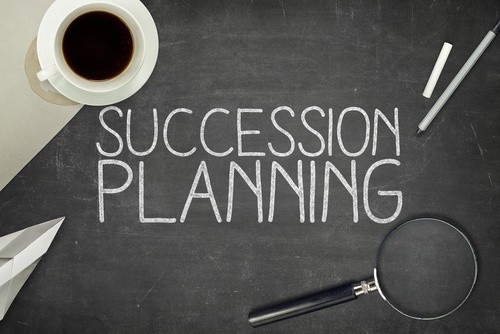Succession planning is a process of identifying employees who are capable of moving into the key positions within your business. It helps to identify future capacity and capability gaps, and address professional development requirements. It enables career discussions with employees.
Why Develop A Succession Plan?
Succession planning ensures the ongoing sustainability of your organisation. All organisations lose good people for a variety of personal and professional reasons. Succession planning is therefore important to ensure your business is well placed to continue its goals and strategy with a high performing team.
Such planning should be aligned with the overall business strategy, this will ensure that the investment in future leaders is targeted and reflects the organisation’s strategic direction. Most importantly, succession planning needs to be an ongoing commitment so that people with the best skills are moving into the right jobs.
Succession planning is a talent and organisational improvement initiative that enables a business to grow and thrive now and in the future. Unfortunately, succession planning is too often an undervalued process in organisations and therefore not done as a result.
Organisations cannot succeed or grow without formal succession planning in place so it is crucial that your organisation makes this process a priority.
How To Develop A Succession Plan
Filling critical vacancies can be expensive, time consuming and challenging, so you need to prepare for this by implementing a succession planning process that will allow you to minimise the impact of losing key staff. Effective succession planning will ensure the business runs smoothly until critical vacancies are filled.
It is crucial that you proactively identify and develop high potential employees now, so that you have people with the right skills and experience once a key role becomes vacant. This will enable you to respond to change more effectively and ensure leadership continuity. It is also an effective process for recognising, developing and retaining leadership talent.
5 Steps To Create A Succession Plan
1 – Identify Key Positions
Analyse business plans to identify the positions most critical for business growth.
2 – Identify Potential Successors
Establish the key competencies required to undertake these roles and the high potential employees that could step up and assume these positions.
3 – Determine When Will The Potential Successors Be Ready
Recognise the timeframe of your successor’s readiness to take on the role. Are they ready to commence development now? In the short term? Or, in the long term?
4 – Determine What Development Needs Do They Have
Determine the training and development required to fill skill gaps and prepare them for advancement. This can include mentoring, secondments, on the job training as well as external courses.
5 – Ensure An Ongoing Commitment
Managers in all parts of the organisation should be continually identifying gaps in talent and focusing on the development of high performers.
Need Further Advice? Talk To Harrison Human Resources
With our HR Consulting service, we can provide practical advice and guidance on how to create a comprehensive succession plan.
Simply click here to request an obligation-free 15 minute phone consult to get some initial advice on your HR needs.
Claire Harrison is the Founder and Managing Director of Harrisons, a flourishing HR consulting business that sprouted in 2009 from Claire’s passionate belief that inspiring leaders and superstar employees are the key success factor to any business. With over 20 years’ experience, Claire has worked as a HR Director of multi-national organisations, as a Non-Executive Board Director, and a small business owner. Claire’s corporate career includes working with companies such as BHP, Westpac, Fonterra and Mayne Nickless.





